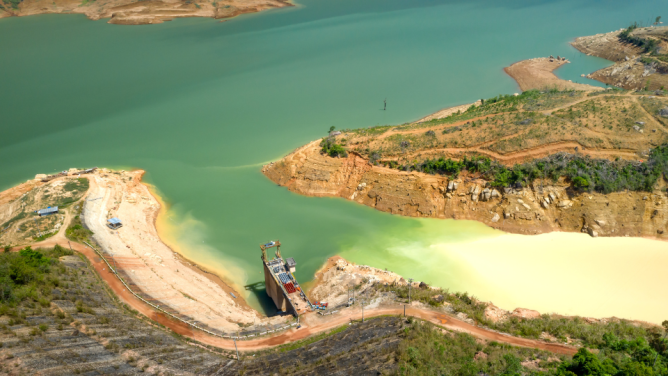Garbology is a growing discipline, which focuses on the systematic study of waste, goods and decommissioned spaces. It also challenges what we sometimes hastily place in those different categories. Construction site excavations deserve our specific attention. For instance, work on the Grand Paris Express transit lines is expected to generate the equivalent of 43 million tonnes of excavated material by 2026. Ironically, while cities are extracting massive amounts of soil from their subsoil, often of good quality, they are also importing fertile land to develop green spaces. Circular urban planning approaches are being developed to balance this inconsistency. Soil extracted from building sites is now being used as building materials, and as raw material for the development of new living soils.
Understanding soils for better use
Soils, whether natural or human-made, are complex and varied environments. They are living ecosystems that need to be thoroughly understood for better preservation, use and regeneration. In that respect, the creation of “soil-geochemical funds” is a prerequisite to action. This is the role of the Urban Soil Analysis Database (BDSolU) in French cities. Accurate mapping also facilitates land reclamation. The GeoBaPa project has been put in place in the Ile de France and Normandy regions following the Greater Paris construction plans. It has helped determine the chemical quality of excavated soil, as well as the quality of recipient soils. This scientific approach led by Soltracing has eliminated the need for painstaking, individual case analysis. It also shows that up to 50% of excavated soil can be reused, while the quality of the recipient sites is not affected.
The birth of an industry
This paradigm shift in the nature of excavated construction site soil is creating a new recycling market. Developed by Grand Paris Aménagement and the city of Sevran, France, Cycle Terre aims to include the Greater Paris construction sites in this circular logic . Extract, a subsidiary of VINCI Construction France, handles the management of soil, sediment, site sludge and industrial sludge and specialises in the treatment of polluted soils. EquoVivo , another VINCI subsidiary, works on the renaturation of degraded environments (see the interview with Managing Director, Lionel d’Allard), and on ecological continuity through green and blue networks that facilitate the free movement of living beings. The recovery of excavated soil has already kickstarted two projects by intrapreneurs supported by Leonard. Elsewhere, Hesus is currently developing software solutions for the management and traceability of excavated soils.
A recipe for technosols
Despite significant progress in the area, the recovery of materials has not reached its full potential yet. Today, most recycling still takes place in “volume recovery” , such as in the redevelopment of industrial sites on polluted soils or road building backfill. The main challenge is to develop a “material recovery” to transform excavations into “noble” construction materials. However, there is also a third, unnoticed but promising way: technosols. These constructed soils are based on human-made materials and open a potential door to the recreation of fertile soils in urban environments, using recycled materials from that same environment. The majority of the projects is currently experimental, but is promising.
The Bio-TUBES experiment has focused on the ecological conversion of a wasteland over three years and has concluded that “the “habitat for soil organisms” function was quickly restored overall, while the regulatory functions (climate, nutrient recycling, water flow) have had positive results.” Technosols could also be used on rooftops, as they could play an essential part in urban greening. They might also help invent richer and local substrates, for a better CO2 balance and greater biodiversity. AgroParisTech’s experimental vegetable roof garden , developed as part of the environmental research lab in partnership with VINCI, uses technosols for urban agriculture in containers. As urban soils and excavated soils are better managed and understood, they are now key resources for designing the cities of tomorrow.


